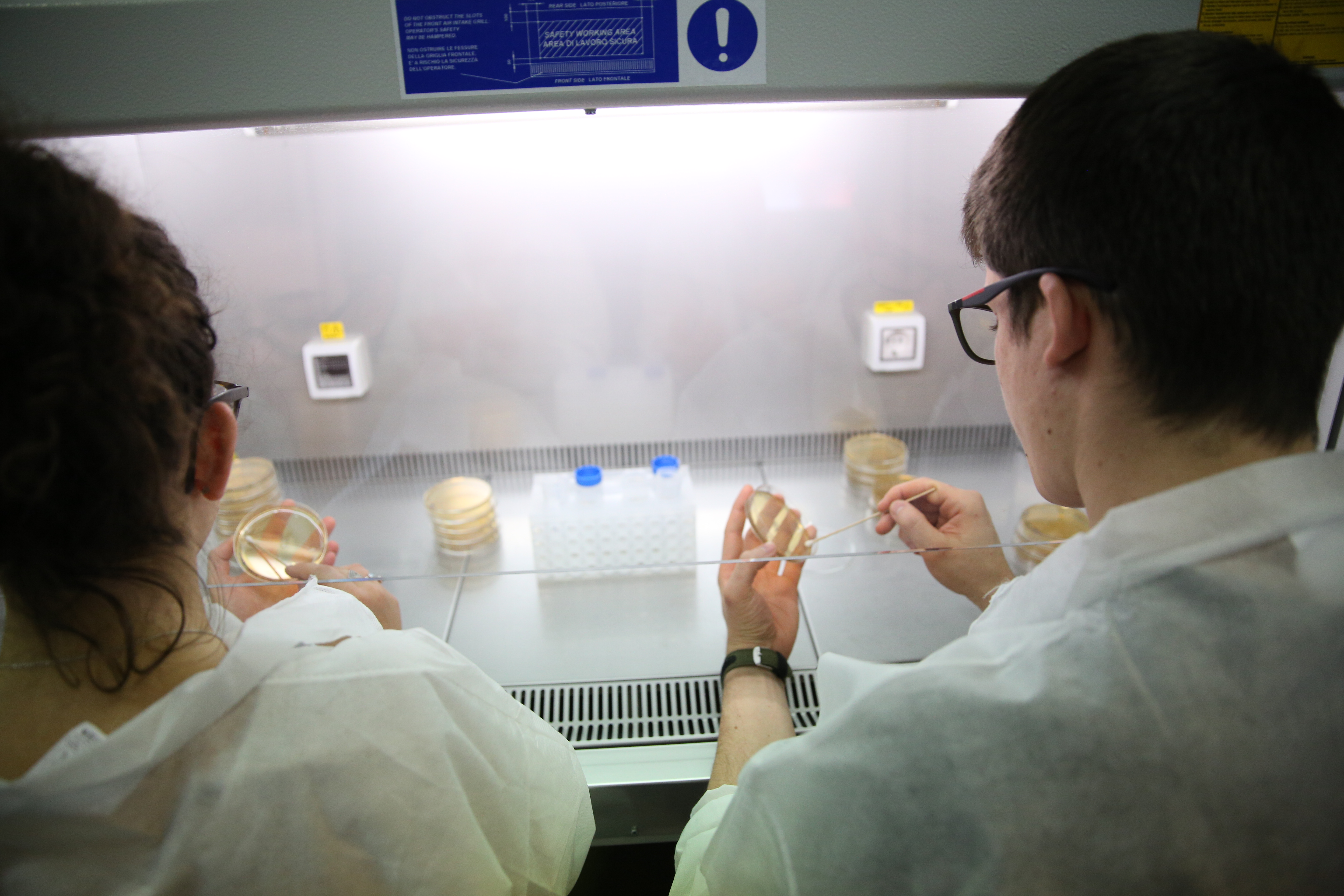Biobank
The biobank is an innovative research facility established by UPO to foster an inclusive scientific community where citizens, researchers and institutions come together to actively participate in the research process. The AGING Project will use the UPO biobank for the “Novara Cohort Study,” a study aimed to investigate the aging processes in the population residing in the Novara area and to identify lifestyles leading to healthy aging and risk factors associated with aging-related diseases.
By providing blood samples, liquids, tissues and related clinical data, every citizen plays an essential role in the biomedical research on aging. Each participant is also asked to fill out some questionnaires about his/her health status and lifestyle. The biological samples and the personal data are then deposited in the UPO biobank and made available to researchers to study the molecular mechanisms of aging and related diseases, such as neurodegenerative, cardiovascular, metabolic and neoplastic diseases. Data processing is carried out in compliance with the requirements of Regulation EU/679/2016, in a protected and safeguarded mode through encryption systems and passwords to prevent unauthorized access. At any time, the citizen may access the information from the research project and/or request the destruction of the biological sample.

FAQ – Frequently Asked Question
What is a biobank?
The biobank is a non-profit facility that, in full compliance with the rights of the individuals involved, guarantees and manages, according to high quality standards, the systematic collection, storage and distribution of human biological samples and related information for biomedical purposes (i.e., research, diagnosis, prevention and therapy). The biobank performs a public, third-party service that guarantees the principle of independence of a process finalized to the collection of biological material, ensuring full disclosure to all stakeholders.
How does biobank work?
In the biobank facility, starting from the entrance, everything is closely monitored down to the last detail. The rooms of the facility are equipped with electronic access control and alarm systems that signal any malfunctioning. The management of samples and data is performed through software that guarantees traceability and anonymity.
Certain samples can be cryopreserved in freezers at a temperature of -80°C. The biobank also boasts several liquid nitrogen tanks that can store samples at -198°C. Cryopreservation is required to preserve unaltered biological material for extended periods of time.
Are there any different types of biobank?
Even though there are exist in multiple formats, biobanks can be classified according to two main criteria: i) type of biological material collected, and ii) purpose for which these specimens are collected. Biobanks can in fact collect different types of biological material, such as cell lines, tissues, primary cells, biological fluids, DNA, umbilical cords, organs, male gametes and eggs, from healthy and/or sick individuals. Depending on their purpose, it is also possible to distinguish disease-related biobanks (e.g., oncological, genetic or multispecialty) from population biobanks, with the latter collecting biological material belonging to population groups with particular characteristics useful for epidemiological studies.
What is the role of a biobank in scientific research?
The biobank is a precious resource that makes available to researchers a large number of biological samples as well as epidemiological, clinical and research data, providing an amount of information that was unthinkable only a few years ago. This unprecedented load of data made available to clinicians and researchers in the biomedical field has the following three objectives:
- To increase the knowledge of disease risk factors to prevent disease onset;
- To identify the biomarkers for early diagnosis;
- To develop precision medicine and personalized therapies.
Why participate in a biobank?
The scientific impact of a biobank strictly depends on the collaboration between the population, researchers and institutions. Indeed, each actor plays a fundamental role: the single individual is at the same time the beneficiary and the driving force of the research process; the biobank manager preserves and protects the biological samples and personal data; the clinician informs the participant and collects the samples; and the researcher devises new techniques and analysis tools to put the collected samples to good use. In this regard, it is imperative that the participant be informed about all the activities of the biobank, the purpose of the research and the use of the scientific findings.
What is the role of the biobank in society?
The biobank is also a useful tool to engage the public on questions and matters related to science. Indeed, the direct participation in a biobank makes the individual more aware of the unprecedented social and scientific advances in biomedical research and healthcare, which requires a new paradigm of citizenship based on ethics and community-based participatory research.
How are interests of science balanced with policies protecting the individual’s rights?
It is more important than ever that the freedom to pursue knowledge through scientific research go hand in hand with policies protecting the individual’s rights through informed consent and participant’s rights. The participant is in fact key to the creation of a biobank: without his/her biological samples and clinical history the biobank would not exist.
In order to protect the dignity and respect of the participants, their inclusion in a research project can only take place if the subject signs a free and informed consent and if there is the authorization from an independent Ethics Committee and Guarantor. The act of consent through which the participant leaves his/her biological material is a fundamental requirement for the collection, conservation and use of his/her biological material and shall be regarded as a free, conscious and participatory act.
According to best practices and given that the informed consent must cover the entire process for which a sample is collected, the information provided to the participant shall: i) explain the various phases of collection, conservation, use and transfer to other researchers or institutions, other than the proposer; ii) state that it is possible to inform the participant about the results of the research; iii) disclose possible consequences for the participant or members of the participant’s family of the results of the molecular tests; iv) explain the possibility of anonymizing the samples with a code; v) specify the measures taken for the protection of personal data; vi) indicate the name and contact details of the person in charge of the biobank, that is the processes of data protection and circulation of anonymized samples; vii) inform the participant that it is possible to withdraw his/her consent at any time and request the destruction of his/her personal data and samples; viii) specify the fate of the samples in the event of revocation or closure of the biobank; and ix) disclose any commercial prospects related to the research.
The relationship between the participant and the biobank tends to grow as more research is being developed. Therefore, the participant shall continue to have the right to data protection concerning the results of new research projects and shall be entitled to revoke his/her informed consent at any time.
Main legislative references on personal data protection
Further to the entry into force of the General European Regulation on the protection of personal data and privacy, (European Regulation 2016/679 – General Data Protection Regulation – GDPR), the Leg. Decree No. 101 of 10/08/2018 (in force since 19 September 2018), harmonizing the Personal Data Protection Code (Legislative Decree no. 196 of 30 June 2003) with the provisions of the EU Regulation, has been approved. The articles of the updated Code pertaining to scientific and medical research are Article 110—it concerns medical, biomedical and epidemiological research—and Article 110 bis—it regulates personal data processing by third parties of for scientific research or statistical purposes. On the 5th of June 2019, the Guarantor for the protection of personal data, therefore, approved the “… measure identifying the provisions relating to the processing of personal data carried out for the purposes of scientific research and the processing of genetic data, pursuant to Article 21, paragraph 1 of Leg. Decree No. 101 of 10 August 2018 (Measure No. 146).”

